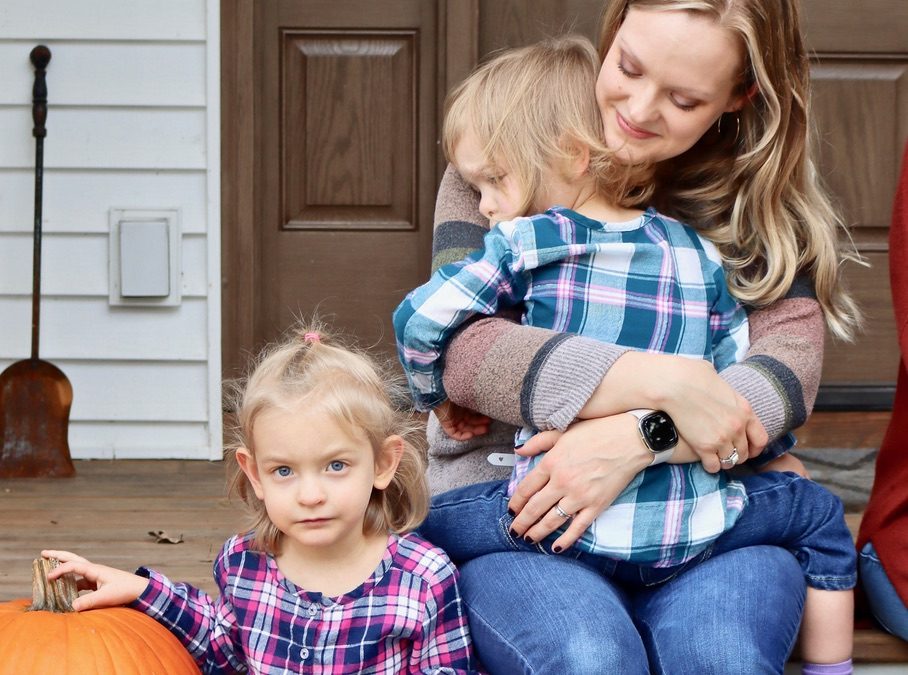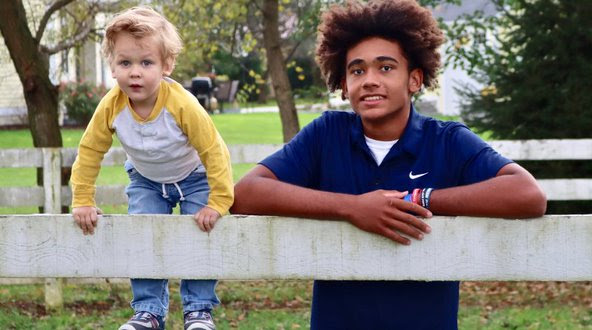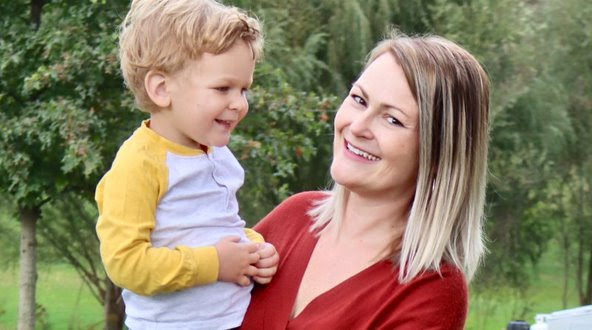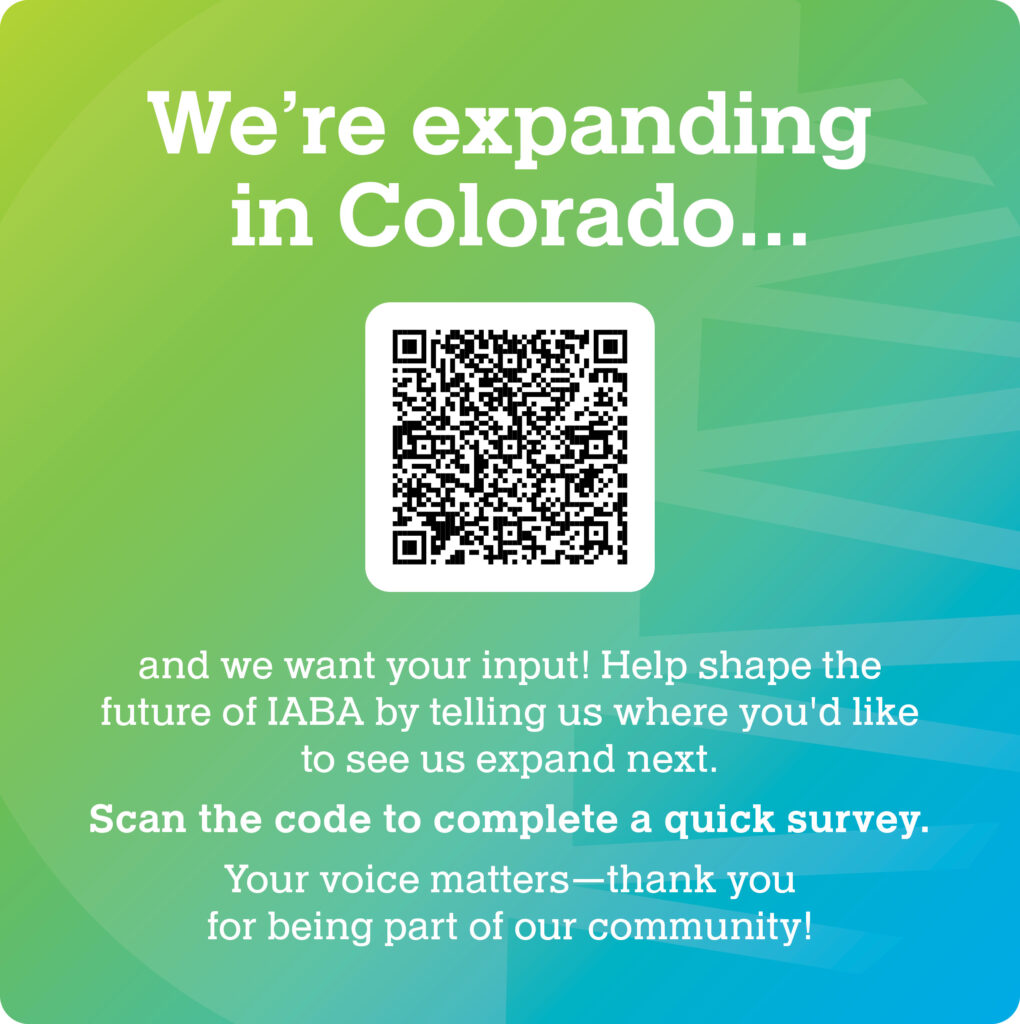
by Jessie Cooper | Mar 31, 2022
Over the course of that last month, I’ve written to you about finding joy amidst hardship, living through pain, leaving domestic violence, and navigating fear. This is not a light load for anyone to take, let alone write about. Outside of my own personal experiences, I know that the people I love (and the world) are carrying hardship too.
LIfe has always had joy, pain, happiness, sorrow, and other dualities. Add a 2+ year pandemic to any of those feelings and we have an additional ongoing hardship to navigate in addition to life being, well, life. How are we surviving and how can we thrive during this time? I don’t know the answer to that but I do know that taking care of our own hearts, bodies, and spirits is truly the only option to get through it.
Taking Care of Yourself
I’ve been a healthcare professional for longer than I’d like to admit (15 years and counting). Over the course of my time with an active caseload, I cannot tell you how many times I repeated the age-old line “you have to put your oxygen mask on first!” when talking to exhausted caregivers of children with behavioral disorders. Fast forward a decade to when I became a mommy and joined the bandwagon of “self-care isn’t selfish, really!” as I carved out time for myself to have enough capacity to raise my little men. Talking the talk is easy to do and going through the motions of self-care has also been extremely publicized over the years.
Need more you time? Pour a glass of wine. Exhausted? Slip into a hot bath. Don’t miss the gym! Press that green juice. Where is your yoga mat? Society and marketing firms have a list of activities that we all can do in order to recharge our batteries and put ourselves first. While we might actually enjoy some of these activities, these slogans and lists completely miss the mark.
You see, all the slogans are telling us that we could actually be more perfect at taking care of ourselves in addition to a mounting list of things to do in order to live the ‘ideal’ life. Perfectionism is not in short supply these days. Neither are product lines nor marketing companies that profit from our deep dives into perfectionism and trying to be ‘good enough.’
In short, the way society (and I) used to talk about self-care is a one size fits all methodology, but one that can actually leave us more exhausted than relaxed. But self-care is really important, and recharging is essential during well, life, and times of high stress. So how do we fill these needs for ourselves? How do we take care of our beautiful but exhausted hearts, spirits, and bodies? My first piece of advice has literally gotten me through my entire life (the good, the bad, and the ugly). Ready for it? My mother would be shocked. Don’t listen to anyone. Like anyone.
Listening to Your Real Needs
I mean I can apply “don’t listen to anyone” to most facets of my life (it’s not always right!) but in regards to self-care I know I’m on to something. How could anyone from the outside world tell you how to take care of yourself when our needs as humans come from inside of our bodies and spirits? The only voice that can actually tell us what we need to recharge is our own. When we need it, how we need it, what feels good, what doesn’t, and so on. Self-care looks like being a guardian of your own energy and putting what your heart, spirit, and body need before the needs of others. Yes, even your children and especially every other person you love.
In a world where we are buzzing and being “so busy,” simply saying, “firm no,” to anything and anyone is the first step to listening to what you really need. It’s impossible to be honest with yourself if you do not make time for yourself. Self-care isn’t a status, it’s a way of being, one that I needed to be more honest with myself about recently. Burning at both ends has been my status quo for well over a year (OK, more than 5 years). Then I remember the wise voice inside of me that wished for my health and happiness above all else. Then I remembered to sit down and listen to what I really needed.
For me, I needed more time with my friends and family and more quiet time to reset on my own. It was a balance. I also needed better food, less sleep (I was over napping… a lot), and finding time to be quiet in my own body (so I did sign up for some yoga classes). I’m not fully re-energized yet but each morning I remind myself I am my own guardian and that I’m worth it. Trauma comes, hardship comes, and our hearts, spirits, and bodies need us to care deeply and kindly for them as we navigate our own personal pain (or just a bad day). We all need a little more kindness starting with ourselves.
It is only in taking care of ourselves that we can care for others. I won’t go all oxygen mask on you but I will challenge you by asking you this, “what hurts, what is tired, and what do you need?” Turn off the noise of the outside world, tune into yourself, and find out. It’s a journey worth taking, I promise.
Xoxo,
Jessie

by Jessie Cooper | Feb 24, 2022
Last week I wrote to you about life being beautiful, even when it is hard after yet another winter in COVID and the extension of my divorce. As with many of us, these past two years have been full of pain for me alongside joyful moments. Leaving domestic violence saved my life and began to lay the groundwork for my children living free of abuse. Yet the system in which I am divorcing poses its own challenges as many systems do.
Living through the pandemic, alongside my family and friends, has also been traumatizing not only for me but for the people I love. As yet another winter rolled in with no change to the stressors around me, for the first time in a long time, I was able to see that pain is part of life and oftentimes it is out of our control. I’ve often written about fear as a guidepost, but the acceptance of the pain that true trauma and hardship bring is real. I’d like to say more.
Accepting Emotions
As a small child, I thought that life was always supposed to be happy and that happiness was the destination we were all working toward. I was taught, as a girl, to modify my emotions to keep the peace and others comfortable. Any type of negative emotion was seen as something to be avoided and punished. Being uncomfortable or causing discomfort seemed to be a cultural “No” for women where I grew up.
I am lucky enough to have a mother who at home allowed us to feel our full range of emotions (and I had a lot) but even with this outlet, I was conditioned to feel shame over negative and loud emotions that often came from fear, pain, and my experiences with injustice. Happiness was where we were all going and how other people deserved to feel. The full range of negative emotions I felt (and still feel) were not welcomed and are still not welcomed in many places.
You see in a world where comfort and happiness are the prizes, discomfort is seen as the enemy. We are sold an awful lot of bullshit from the stories politicians tell, social media, and marketing firms about how to stay small and comfortable. Feel pain? Vote for me and I’ll fix your suffering. Feel pain? Follow my beautiful life on Instagram, then copy it. Feel pain? Buy another…fill in the blank to numb it. Feel pain? Just pour another glass of wine mama. All these ‘solutions’ when the real answer is, “feel the pain; first nurture your own heart and soul, then ever so slowly step back into life.”
Pay Attention to You, Not What the World is Telling You
Our society is gaslighting us by telling us that life is supposed to be warm and fuzzy all of the time. If we question our own discomfort, leaning into how we feel, we are challenging the system of power that is designed to keep us small. In my recent experience, if you speak loudly about discomfort (like domestic violence) shame is rampant because speaking about pain makes other people uncomfortable. I can write with 100% certainty that other survivors have had this experience when they have spoken about their abuse. Perhaps, in my lifetime, that percentage will decrease.
But here’s the thing. None of us, none of us, go through life in a bubble feeling happy all of the time. Happiness is fleeting and if we are using it as a meter for our life we will in fact miss our lives. Joy is a long-lasting emotion that can live with pain. I’ll write more about this later, but today we stay with pain.
How many of you have been raised to believe that pain is a scary, avoidable emotion that needs to leave your life as quickly as it came? And how many of us have had life experiences that are outside of our control that caused the pain? I’m guessing all of us. At the end of one of Glennon Doyle’s recent podcasts, her daughter Tish Melton sings. One line in the song has stuck with me week over week. “I hit rock bottom, it felt like a brand new start. I’m not the problem, sometimes things fall apart.”
This line stays with me because so many of us are not only told to avoid pain but told that when bad things happen it’s our fault especially when we are talking about abuse. Or that if we are feeling pain our job is to hide the pain to keep everyone comfortable, because everyone else being comfortable keeps us safe. It’s a loop that ultimately leads to shame and, as the brilliant Brene Brown writes, “the only way to eradicate shame is to talk about it.”
Pain & Shame
So, if pain and the strong emotions surrounding this pain are part of life, why should pain something to be avoided? The real answer is it should not. Pain is just part of life. It’s nothing to be ashamed of. It’s not something we need to race past to get back to happiness. It just is.
And alongside pain just being part of life, joy is also a part. Sitting with pain and allowing others to know about your pain heals your own experience with pain and, in cases of abuse, can save the lives of others when you speak out. The more we allow pain to be part of life, the more we can tackle head-on what is working in our lives, how to nurture ourselves through life’s challenges, and how to protect others from the pain others are trying to inflict on us. The small subset that is.
It’s OK to say what hurts. If we swallow our pain and push on into, “fine,” just to demonstrate we’ve won the golden ticket of happiness we will in fact miss our own lives. Pain happens. Hard times happen. How we navigate the pain is not only the roadmap back to our own hearts but will help to build a more true representation of the human experience.
If you are living in a situation where pain is happening because another person is causing it, this type of pain is not OK and not what I am writing about. I am writing about the pain that comes from feeling our own emotions and human experiences. If another person is hurting you, in any way, the kindest thing you can do for yourself is to leave. Yes, it will hurt, but that pain is worth it. The pain you are feeling from abuse is never, not ever OK.
Pain within is a compass. It tells us how to care for ourselves and how to leave what is no longer serving us. Happiness is a guise as a final destination. Freedom is what we all deserve. Freedom to be who we are, feel what we feel, and live our lives as close to our soul as possible.
I don’t know about you but I’m not raising my little men to be happy, I’m raising them to be free. Free to feel every part of their human experience knowing that first mama and then their own hearts is a safe space to land.
Xoxo,
Jessie
P.s. This one’s for you Kiki

by Jessie Cooper | Feb 17, 2022
This past November I made a decision to stop publicly writing until my divorce was final. I’ve spent hours on the stand just reading my own bank statements and wanted to prevent my blog from somehow adding to the length of the divorce process. In September of last year, the courts scheduled a final hearing for March 3rd, 2022. “Just 6 months,” I thought, “I can do 6 more months.”
This past week I received a call from my new lawyer… another extension. Four more months. The date I was told was final was not. There is so much I want for my children, so four more months of the same felt unreal, yet here it was. It felt like Groundhog Day. Haven’t I been here before? Stuck in the same?
Dealing with an Extended Divorce Process
Yes, I have been divorcing for what will now be more than half of my younger son Declan’s life. He was 18 months when this all started, now he wants a race car cake, like Metchie (his older brother, Dametrius) for his third birthday. My Henry will be ready for kindergarten this fall. My son Dametrius will start looking at colleges.
My children have kept growing, yet their mama’s world has seemed stuck in the same storm. Sunshine was promised yet clouds continue to roll in. As hard as my situation is (divorcing in a small town while leaving domestic violence) I can’t help but think of all of us, stuck in the pandemic for longer than my divorce, waiting for a clearing stuck in the darkness.
Last September when I received the final divorce date I thought “OK after my divorce is final life can go on.” I will be able to make plans. I want to go to the beach. To hold my babies for more than two nights at a time before transferring to their father yet again. To begin building a life with the amazing partner I am lucky to call mine. To spend time with friends. The list went on and on.
With COVID, I have felt the same way, wishing for it to be over so life can go on. Have you? How many times have you found yourself saying, “when COVID is over, when it’s normal again, I’m going to…” fill in the blank. I know personally, I’ve thought about activities for the kids, swim lessons, flying on an airplane with children, and so much more. My sister’s darling twins turned 3 this year, she really, really wants to take them to storytime.
Finding Motivation
I don’t know about you, but when there is a restriction present it is hard to plan, to know what to do, to make things feel formal. Whether it’s a divorce, a pandemic, or anything else outside of your control, how do you convince yourself to go on when sometimes all you want to do is go back? Back to the way things were before the restriction was there.
This week when I got the news of yet another delay something shifted in me. Snapped if you will. I couldn’t do it. I could not spend one more moment telling myself, “when I’m divorced I’ll fill in the blank.” I don’t know about you but I also cannot do one more, “when COVID is over then I’ll fill in the blank” either.
I looked at my babies (OK now full-on boys) and right in front of me, life is happening. They are growing, evolving, and living. They aren’t waiting for anything to change their lives, they are just alive. While divorce is hard, they are little, and often the biggest upset of the day is something like no ice cream or Mario time.
Dametrius is actually thriving and his thriving splits my face into a smile I cannot shake. In looking at my children and now two restrictions without an end I can depend on I decided, “you know what, I can live too.” I don’t need to wait for this to be over and the truth is life isn’t going to be the same after all of this but it’s not going to be better either. It’s just going to be different. There are amazing things happening right now in the darkness, shining stars if you will.
Seizing the Now
Sure there are a million things my heart and mind want to do when I am divorced and the pandemic isn’t restricting our social life. But there is so much to love right here, right now. Just this past weekend, I celebrated my 35th birthday and was surrounded by the best friends and family I could ever ask for. I am not kidding you, outside of my dear Aunt Linda in Colorado and Catherine in New Mexico, I sat down with, dined with, or exchanged gifts with everyone I love. Everyone.
How does a woman become that lucky? And these people I love? They are the most incredible people you have ever met. After spending a week with them, alongside my boys, I basked in the evidence right in front of me that life can be beautiful even when hard things aren’t going anywhere. Or are going somewhere at a snail’s pace.
I thought to myself, what do I want to do now with my one wild and precious life? I do not have time today to fill the pages with my dreams. But today, I want to adjust my spirit for the slow walkout and to enjoy every step on the path. I’ve got some incredible people walking right alongside me.
When Life is Dark as Winter’s Night, Share Some Kindness, Bring Some Light.
Xoxo,
Jessie

by Jessie Cooper | Nov 24, 2021
This past week I wrote to you about setting boundaries with our children. In my blog, I wrote about the importance of boundaries for the emotional development of children. I also wrote to you about my own struggles in setting boundaries as a mama. One of the main reasons I struggle with setting boundaries for my own children is the (out)bursts that come with it.
It just so happens that as a clinician one of my primary areas of specialization is problem behaviors (the bursts). It’s what I went to graduate school to study over a decade ago. Over 10 years later and I can tell you the science of reducing problematic behaviors hasn’t changed. My own journey applying clinical skills at home, of course, has not (well, not totally). Today I’d like to write to you about both.
ABA & Bursts
Let’s start at the beginning with ‘burst science.’ Applied Behavior Analysis teaches us that social behaviors, both positive and negative, can be broken into units that can be studied. In studying units of behavior, BCBAs are able to identify the function of behaviors (why behaviors occur) and missing skills in the child they are studying. When it comes to reducing problem behaviors, behavior analysts are looking for why the behavior is occurring. This involves looking at what is happening before the behavior and what happens after the behavior.
While studying the environment before bursts occur, BCBAs look for a deficit in the child’s environment. What are they missing? Studying environments after bursts allow BCBAs to see if the child’s problem behaviors filled the deficit. If they did, the child is successfully using the problem behavior to get their needs met. This means the problem behaviors are being reinforced and will continue to occur. Magic I’m telling you. Magic.
You see, by studying what a child is seeking in a specific environment you can create interventions that fill the child up with what they are seeking to immediately decrease the problem behaviors. This isn’t a long-term solution, but it creates a short-term solution to make the days easier for the child and their families. While the child is being satiated BCBAs work on teaching new skills surrounding the child’s needs. This always looks like teaching functional communication skills, how to ask for exactly what you need.
Sometimes teaching specific skills can look like teaching patience and tolerance to ‘no’ when what the child wants isn’t good for them to have all the time. For example, if a child is throwing tantrums to get access to candy it’s damaging to have non-contingent candy all of the time. But if a child is tantruming for positive attention, we can fill them up without having to teach tolerance to no. Though we might have to teach waiting because sometimes mama (or papa) is busy.
The key to this remedy is to also remove reinforcement when a child is using their problem behavior to get their needs/desires met. If, in the scenarios above, the BCBA is providing candy (one piece) every 30 minutes and within 15 minutes the child hits to get access to the candy the BCBA cannot give the child the candy. If they do they will reinforce the hitting and take the motivation away from using words. It is here, in this little sweet spot of the behavior intervention, that bursts occur. Let’s talk about that.
Why Do Bursts Occur?
Underneath the bursts for children (and adults… more on that later) is fear that their needs/desires won’t be met. The bursts occur because, in the child’s mind, that very thing they want could become unattainable, their need won’t be met, and they will have to experience negative emotions. Dealing with both the fear of a need/desire not being met alongside psychologically negative emotions is tough stuff for a child. This right here? This is the hard part for parents and the sweet spot for teaching emotional resilience and intelligence.
As a mama, I know firsthand how easy it is to give in. To not want to deal with the temper tantrum, the screaming, and the crying. We are human beings and crying children is not comfortable. When we give in as parents at a given moment it provides immediate relief to ourselves and our children. It also perpetuates the very behaviors we don’t want to see more of and does not teach our children how to deal with the big emotions.
About a year ago Henry and I were at Dametrius’s football game and Henry wanted candy from the concession stand. I had packed snacks and knew sugar was on the menu later so I didn’t want him to have extra candy. I leaned down and told my little son, “no, not now we’ll have dessert at dinner”. Of course, in public, a full-on tantrum occurred. At that moment I thought how perfectly aligned this example was. You see at that moment I could have made a concession at the concession stand by just giving in. If I gave in Henry would happily watch the game and I wouldn’t have to be teaching Henry to breathe and tell me how he feels. But giving in also meant teaching my son to numb his emotions with food and that screaming works. So I stood my ground and worked with Henry.
You see under the bursts, as we are teaching boundaries. As children burst, their hearts need to know they can ride through negative emotions and still be safe on the other side. That nothing bad comes from feelings and that needs can be met in new ways. To me, as a clinician, I know that working through the bursts creates long-lasting, positive, change. As a mama, teaching my children to ride what is underneath the bursts is more valuable than any concession I could make at any given moment.
Xoxo,
Jessie

by Jessie Cooper | Nov 17, 2021
Last week I wrote to you about my own journey in boundary-setting as a business owner and woman. This week I’d like to dive deeper into boundaries and talk to you as both a mama and a clinician about boundaries on the home front.
As a clinician, not only do I have extensive knowledge about early childhood development but one of my areas of expertise is reducing disruptive and dangerous behaviors. I spent the first five years of my career in Applied Behavior Analysis working in early intervention and on crisis cases.
I can see my young self now, rested for the day, walking into a therapy session and teaching things like how to work through a tantrum. I worked with each family on their own values and expectations of their child, observed the needs the child was trying to get through their tantrums, and taught consistent consequences to the family as well as adaptive skills to the child. In the range of adaptive skills I often taught language (use your words), patience, tolerance to hearing ‘no,’ disappointment tolerance, and expression of feelings. Each family and child was unique but the structure of the treatment was similar and based on boundary setting.
Learning Boundary Setting as a Mom
Fast forward about 8 years to when I became a mama and my son Henry became a toddler. Henry was (and is) a strong-willed child. I remember writing in his baby journal “I didn’t know babies came out like you…” because Henry was (and is) so vocal about how he sees things and how he wants things done. As a mama, I tried to also be a BCBA and use the same tried and true treatment structure with Henry. State a boundary, follow through with the boundary, use your words, and teach new skills. Easy right? No. Hard no.
Throughout my journey into motherhood, while I love my boys above all else, I have struggled with both postpartum depression (Henry) and a toxic home environment because of domestic abuse. Toss in three boys who all have varied needs, wants, desires, and voices and the stress of setting boundaries felt impossible. You see, the thing with setting boundaries is that when you first set them children tend to resist them. Boundaries feel like a “no” to children (often they are) and the “no” feels like something for them to rebel against. As a parent, you have to be ready for the explosion as you set expectations. I’m going to be honest here; I could not weather the explosions so I became a, “yes mama”. Ugh.
Boundaries by Example
A year ago when I left domestic abuse my children & me. We were living in a psychologically frightening environment and I knew, no matter how much I wanted their dad to get help, that I couldn’t stay any longer. I set the boundary that I would not live in an abusive environment and modeled this incredibly important boundary for my children.
Yet as the last year passed my small children had so much change in their little worlds. While some of my “yes mama” tendencies went away, some remained. Want a new toy? Sure. One more piece of candy? OK. TV time? You got it. This also worked the other way and when my children behaved in ways I didn’t love (not staying in bed, dumping their food on the floor, screaming for things) I would spend time making empty threats (one more time and then…) and eventually give in. While home life was much calmer as a single mama and my children were happy with me, I knew I had to reset, buckle in, and teach boundaries.
You see, without boundaries children don’t know which behaviors are OK and which ones are not. Without boundaries, they don’t learn how to navigate unpleasant emotions and what to do with their unpleasant emotions. They also don’t learn how to behave in social situations and can become impolite, spoiled, and disruptive.
Keep in mind that little children are still children. It’s basically their job to overreact while testing boundaries early on. It’s our job as parents, however, to shape their behaviors in positive ways. Yes of course I want my children to be happy but I also want them to know how to navigate their own inner and outer worlds. Boundaries are the way to teach this.
Maintaining Boundaries
As the fall came so did a new peace in our home. I set some simple boundaries for the boys I knew I could follow through with and continued to teach them how to navigate their emotions. I spent time making sure the values I set were in alignment with my values and that I was ready for tantrums when they came. The boundaries I set were for good listening, respect, kindness, and understanding “no.”
My children have become calmer overall after the initial, “holy crap” boundary bursts. Boundaries tell them what is OK and what is not so they don’t have to guess or use tantrums to figure a given situation out. When they don’t like the answer they know we can hold space for them to be sad or mad. It’s a win-win.
Me? I have a ton of compassion for the woman I was in early motherhood and know I was doing the very best I could at the time. I also am incredibly grateful that I’m in a space to apply my clinical skills to mommyhood. One day (and boundary) at a time.
Xoxo,
Jessie

by Jessie Cooper | Nov 10, 2021
Last week I wrote to you about integrity and my own personal experience in being unwilling to bend as a woman. I spoke about my experience not only as a businesswoman but also as a woman who has left domestic abuse and is walking through divorce. That, in my unwillingness to bend, I have had to grow a tougher skin in order to stand my sacred ground. That skin, or cloak if you will, represents my boundaries. My boundaries are how I protect myself, my work, my children, and my soul. My boundaries are also what shame has told me to ignore and each time I did I lost myself.
In writing to you about my unwillingness to bend, I also wrote to you about society’s general expectations that women should be docile and accommodating. That from a young age we are taught to put down what we actually need in order to please another person (males, teachers, adults, authorities, etc). With this social conditioning, there are no lessons on protecting your own worth, needs, and desires, leaving boundaries as never a topic that is never discussed.
Setting Boundaries Isn’t Selfish
For an incredible amount of time, I thought that boundaries were selfish, that when I placed a boundary on someone else who had a need or request I wasn’t serving humanity. Each time I placed a boundary and received backlash I measured my own worth against it. I thought that somehow my boundary was denying another person what they needed. It wasn’t until my experience leaving domestic abuse that I learned how life-saving boundaries are.
Just as many women are coming to find out that self-care isn’t selfish (I’m sure it’s a hashtag somewhere), I discovered that boundaries are also not selfish. In her work surrounding shame Brene Brown teaches us through her research that boundaries are actually compassionate. Compassionate to ourselves and the person with who we are setting boundaries. Boundaries tell us what we are willing to do in alignment with our own values (and person) and what we are not willing to do.
When a person does not respect boundaries it is not a reflection of the worth of the person setting the boundaries, it is a reflection of the person pushing your boundaries. Over the last year, I have learned that people pushing boundaries are expecting their happiness and “power,” to come from another person. Neither of these things can be true.
Boundaries & Happiness
You see, happiness is a choice we make. It is a sacred emotion that lives in our own hearts that only blooms when we remain true to ourselves. Without knowing what makes our hearts glow warmly it is impossible to know what makes us happy. Without knowing what can harm us it is also impossible to be happy. Boundaries are a lifeline to our happiness and hearts. They protect our souls.
Control is a perceived human condition, when we seek to control another person or outcome we have lost trust. We have decided that the world is hostile and that people cannot be trusted. That we must control the enemy, who is taking away our happiness so that our life can be fulfilled. Control over another human being is always about taking and never about true happiness.
As a woman, a business owner, and a survivor I have lived in both of these worlds for too long. Thinking it was somehow my job to make others happy before myself. Thinking that when someone wanted something from me (personally or professionally) it was my job to give it to them. In the biggest lesson in my life, I learned domestic abuse breaks your boundaries in a way where you lose yourself. Gaslighting was a constant theme in all of these scenarios, scenarios that were telling me I was crazy when I did not give in.
Here is what I have learned to be true in a year of healing. Boundaries are a lifeline. Whenever you do not know what to do, how to respond, or who to be in a relationship with, consult your personal values. Then, after you truthfully consult your values, you can insert a boundary. When you insert a boundary that is aligned with your values you will be at peace even if others are not. When others tell you they are uncomfortable because you have drawn a line in the sand you will be strong enough to withstand it. You will be strong enough to know that being at home in your own heart is all the strength you need.
Start Setting Your Boundaries
I have a list of boundaries I lean on now. If you don’t know where to start with boundary-setting, feel free to use a few as you put these lifelines in place for yourself:
- I will not make an excuse for harmful behavior
- I will not excuse my own harmful behavior
- My children and I come first
- I will not go against my personal values or needs to please someone else
- I will not be involved with someone whose words and actions do not align with my own
- I will not be in a relationship where I am not cared for, loved, and respected
Xoxo,
Jessie







